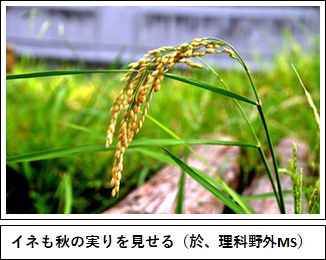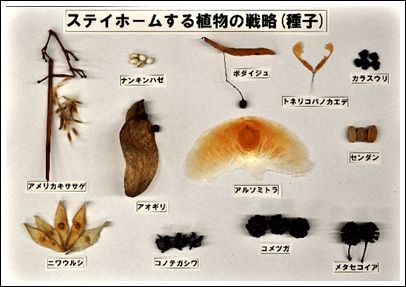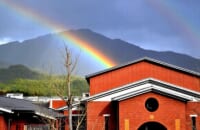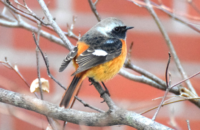 今、ヒトの世界で求められるステイホームですが、見渡せば植物は常にステイホームです。種子が落ちた場所で芽生えてからは、その場所で水と光、養分を得て生長していきます。米や麦を食した人類は植物が動かないので定住生活に移行したとも言えそうです。
今、ヒトの世界で求められるステイホームですが、見渡せば植物は常にステイホームです。種子が落ちた場所で芽生えてからは、その場所で水と光、養分を得て生長していきます。米や麦を食した人類は植物が動かないので定住生活に移行したとも言えそうです。
「人類はこれまで、植物の能力を不当に見過ごしてきた。今こそ人類が植物の分散型構造やレジリエンスから学び、地上に誇るその稀有な能力を自らの生存のために使う時だ。」(ステファノ・マンク━ゾ)
 植物にはヒトの五感よりも多い「二〇感」もあると言います。しかも全身に情報処理センターを配置するモジュール構造を備え、根の根端に至っては、重力、温度、湿度、磁場、光、圧力、化学物質、重金属、音振動、酸素・二酸化炭素の有無などのデータ処理を他の根端とネットワークを築きながら判断している・・・。
植物にはヒトの五感よりも多い「二〇感」もあると言います。しかも全身に情報処理センターを配置するモジュール構造を備え、根の根端に至っては、重力、温度、湿度、磁場、光、圧力、化学物質、重金属、音振動、酸素・二酸化炭素の有無などのデータ処理を他の根端とネットワークを築きながら判断している・・・。
日頃は地下で見えない場所で繰り広げられている生命活動に、私たちは全く気付いていません。
時季が来れば種子を風で飛ばし、また動物を巧みに利用して子孫を広げ、ヒトは食べ物、空気、薬草、エネルギーとして最大限の恩恵を得ています。
私たちは植物からステイホームの極意を学ぶ必要がありそうです。
 Now, people around the world are being asked to “stay home”, but we should remember that plants have always been staying home. They grow where they fall as a seed, getting the water, light and nutriments there. When people wanted to eat rice or wheat, they moved to where the plants were.
Now, people around the world are being asked to “stay home”, but we should remember that plants have always been staying home. They grow where they fall as a seed, getting the water, light and nutriments there. When people wanted to eat rice or wheat, they moved to where the plants were.
Stefano Mancuso said that people have a lot to learn from plants and it’s time to appreciate them more. While people only have 5 senses, it is thought that plants have 20.
They use these senses to process information and control the data from things they get from their surroundings, such as light, humidity, carbon dioxide, and even gravity. It’s like they have a network in their roots to make decisions. We can’t see underground, so we don’t usually realize how plants grow. When the season comes, the plants spread their seeds, feed animals, produce food, medicines, and energy for people, providing so much for us. People really should learn the secret of how to stay home from plants.



